The right combination of diet will allow you to forget about the severe pain in your joints and live a full life. We talk about the gout diet: what works and what doesn't.

Gout is a systemic chronic metabolic disease that causes joint inflammation, swelling, and pain. The disease is associated with urate - the accumulation and retention of urate in the body. Gout has been known since ancient times, and its main symptoms are recorded in ancient medicine. Many famous people suffered from gout, such as Alexander the Great, Emperors and Empresses, King Henry VIII of England, German scientist Gottfried Leibniz, philosopher Voltaire Kant and Schopenhauer.
Gout remains a very common disease. Most of the time, the disease affects men. As for the age at which the first attack usually occurs, it is 35-45 for men and 45-50 for women.
gout symptoms
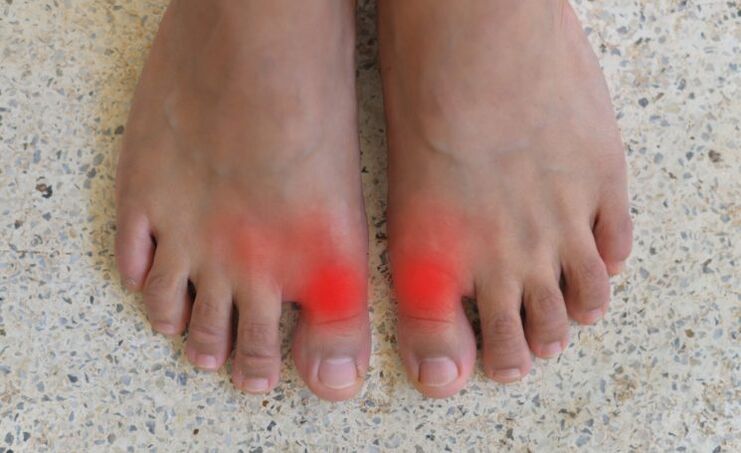
A hallmark of gout is the formation of so-called tophi (urate deposits in connective tissue in the form of nodules and lumps). People with gout complain of severe pain in the joints - most commonly the big toe is affected. In ancient Greek, the disease's name translates to "legs caught in a trap" because most sufferers worry about acute pain in the joints of the feet. Pain intensity increases rapidly and peaks after about 24-48 hours. Redness and swelling in the joint area. Body temperature may rise and chills may occur. Gout attacks are also unpleasant because they restrict the patient's movement. Without proper treatment, the acute phase lasts for about a week, after which symptoms gradually subside. Gout can progress: pain attacks become more frequent, new joints, such as elbows, hands, are involved in the pathological process. Due to the growth and enlargement of the nodes, the joint deforms and its mobility and function are impaired. This causes movement problems: the patient becomes less flexible. In later stages, gout can lead to the development of urolithiasis.
Depending on the nature of the course, the disease can be acute (acute gouty arthritis) or chronic (relapsing arthritis). There are also atypical forms of gout, eg pseudo, debilitating, rheumatoid, etc. They are less common.
Cause of disease development
As we have already said, gout occurs when a large amount of uric acid is formed in the body and the uric acid is not excreted from the body in time. There are many factors that can contribute to this. The following are the main reasons for high uric acid levels and the development of gout.
- genetic predisposition. Mostly, it manifests in the form of various genetic disorders in which the amount of one or the other enzyme is reduced in the body.
- Increased intake of purine bases in the body. These substances are contained in the DNA and RNA of organisms and are involved in the transmission of genetic information. Purine bases enter the body with food, drink, and the decay of the body's own cells. In the Middle Ages, gout was known as the "king's disease". This can be explained by the nobility's love of hearty meals. The bodies of those who abuse meat and alcohol (most of which are purines) cannot cope with high levels of uric acid. The average person eats poorly, mostly plant-based foods, and therefore rarely suffers from gout.
- Problems with excretion of uric acid in the urine. Often seen in chronic kidney disease. It is generally accepted that gout in this condition is secondary, that is, it is the result of another disease. If it goes away, the gout will also go away.
Gout Treatment and Prevention
The success of gout treatment is an integrated approach. If possible, experts try to determine the underlying cause of the disease and eliminate it. However, this is not always possible, so one must limit oneself to symptomatic treatments aimed at eliminating disease manifestations and improving the quality of life of gout patients.
The main direction of gout treatment
- medical treatementUse anti-inflammatories and anti-inflammatory drugs. Anti-inflammatory drugs are mainly taken during exacerbations to relieve pain and swelling. Anti-gout - for a long time, sometimes for life. This is a group of drugs that directly affect the metabolism of purine bases and uric acid in the body.
- topical treatment.It is prescribed both during remission and during exacerbation. It includes compressions with pain relievers and anti-inflammatory drugs, as well as physical therapy procedures. During remission, it is useful to use paraffin, therapeutic mud - this helps to eliminate urate and improve joint mobility.
- Operation.Strong growth in distribution nodes and cones. They are removed to avoid severe deformation of the joint and limit its mobility.
- diet.Diet plays an important role in the prevention and treatment of gout. The main goal of this diet is to reduce the amount of uric acid compounds in the body. If a therapeutic and preventive diet is followed, little purine bases enter the body from the outside, and uric acid levels decrease. By limiting consumption or completely eliminating certain foods from our diet, we can prevent the disease from developing and delay the next attack. People with gout are advised to follow a therapeutic and preventive diet for life, not just during exacerbations.
How to go on a diet
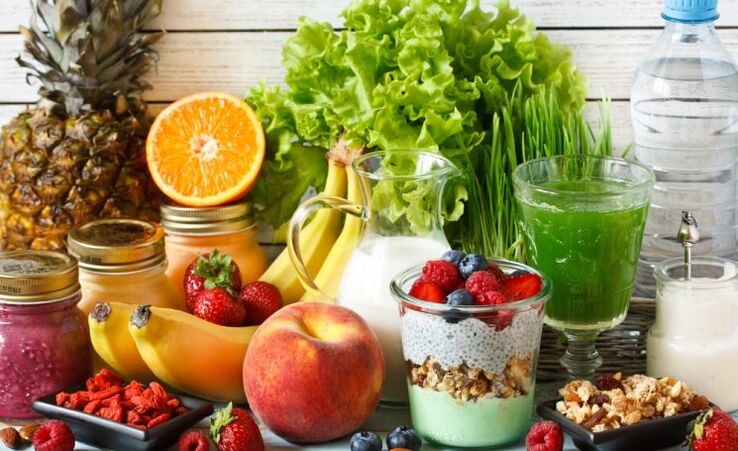
Experts recommend the Diet Table 6 as the basis for gout, a diet for treatment and prevention developed by renowned nutritionists for patients with diseases that accompany the accumulation of uric acid in the body: gout, urolithiasis, uric acid acid constitution. All of these diseases are metabolic diseases and can lead to serious complications. Special diets help reduce the concentration of uric acid in the blood and normalize metabolism in the body. Due to a special diet, the formation of uric acid and the accumulation of urate in the kidneys and joint spaces can be reduced. Diet also prevents the accumulation of purine bases, which can lead to gout. If you stick with it, you can quickly improve your general condition and reduce joint pain and discomfort.
Features of the No. 6 Diet Chart
Therapeutic diets are balanced in terms of chemical composition and calorie content of products and adequate in content of minerals, vitamins, proteins, fats and carbohydrates. Energy intensity is 2700–3000 kcal. If you are overweight, it is recommended to reduce your total calories by reducing carbohydrates.
- Fat mass is 80-90 grams per day. Priority should be given to fats of vegetable origin, the source of which is vegetable oils.
- The daily amount of protein is 70-80 grams, and at least half of the indicated amount should come from plant protein foods.
- The amount of carbohydrates is 380-400 grams per day with normal body weight. With overweight and obesity, the amount of carbohydrates is reduced to 250-300 grams per day.
- The amount of salt should not exceed 10 grams per day.
- The amount of fluid consumed should not exceed 1. 5-2 liters per day (excluding the first course).
A gout diet is not meant to be strictly restrictive, so it is usually well tolerated. Food should be boiled, grilled, and steamed. Try to avoid frying. It leads to the formation of large amounts of extractives and carcinogens that affect the digestive, urinary and cardiovascular systems. You need to eat small amounts every 2-3 hours, eat in moderation and don't overeat.
Foods allowed for gout
The basis of the gout treatment diet is alkaline foods: they normalize the metabolism of purine bases and reduce the amount of uric acid.
What can gout eat?
- Vegetables of any kind - fresh and heat-treated.
- Baked products made from rye and wheat flour with added wheat bran.
- The first course was cooked with a light vegetable and fish soup, vegetarian okroshka, beetroot, lean kimchi, and a meatless cabbage soup.
- Dairy and yogurt products: low-fat kefir, curd, whole milk, low-fat sour cream, natural yogurt, fermented baked milk, and low-fat cottage cheese.
- Fresh and heat-treated fruits and berries.
- Green and black tea with lemon, honey and milk. Homemade fruit and berry kisels, vegetables and juices, berry juice drinks. Herbal infusion (from chamomile flowers, rose hips), fruit preserves, chicory.
- Desserts and sweets: natural honey, marshmallows, natural jams, berry jams, jams, homemade marshmallows.
- Fats: Refined sunflower, corn, olive oil, flaxseed oil. Butter is also allowed.
The listed foods and foods are considered safe for gout. There are also products that you cannot exclude from the menu, but limit their use.
- Quail eggs and eggs, cooked in a steam omelette, hard-boiled or soft-boiled (no more than 1 egg per day).
- From meat products, you can eat veal, lean beef, rabbit, turkey and chicken. From fish - diet varieties of fish. Meat and fish dishes should be eaten no more than 3 times a week, preferably cooked. Thanks to this heat treatment method, meat and fish are freed of purine bases, extracts and uric acid debris.
- It is recommended to limit pasta to a minimum.
What can't you eat with gout
Your diet should not contain foods high in purine bases and uric acid. The following are foods that are not recommended for gout.
- Alcohol and carbonated beverages.
- Chocolate, cocoa.
- The first course cooked with meat and thick fish soup.
- Various nuts and beans, grape juice.
- Hard and cured cheeses.
- Sausage products, smoked products, sausages, canned fish, offal, and meat and fish ingredients high in fat.
- Various appetizers, meat sauces, sauces, spices, spices, ketchup, mayonnaise, mustard, grated horseradish.
- Products from puffs and pastries, cakes, chocolate and caramel confections.
Sample menu of the week
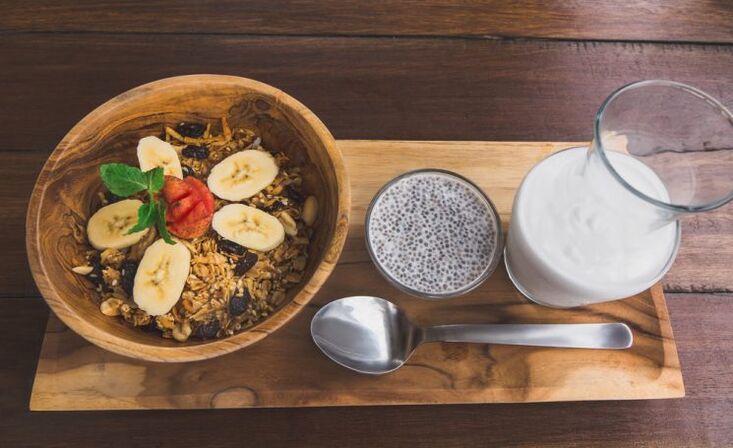
Here is a sample 7-day menu for gout sufferers. It can be adjusted to your liking.
on Monday
breakfast:Vegetable salad seasoned with vegetable oil (sunflower, corn, or olives); 1 hard-boiled egg; pumpkin or carrot juice.
Lunch:Honey-roasted squash; 1 cup whole milk or natural yogurt.
dinner:Stew with boiled chicken breast; a glass of orange or apple juice.
Afternoon snack:Vegetarian borsch with potatoes; poached fish fillets; light green tea or rosehip drink.
dinner:Vegan cabbage wraps; fruit and berry jelly; low-fat cottage cheese with dried fruit.
Drink a glass of milk or low-fat kefir before bed.
Tuesday
breakfast:Scrambled eggs with vegetable salad, seasoned with vegetable oil (corn, olive or sunflower), 1 cup fruit or vegetable juice.
Lunch:Puree of any fruit or vegetable; chunks of cottage cheese with added dried fruit; a cup of herbal tea.
dinner:Braised zucchini with fresh herbs; mashed potatoes; green salad, black or green tea.
Afternoon snack:A portion of fresh berries or fruit; a smoothie or a glass of whole milk.
dinner:Cheese with berry jam or dried fruit; compotes of berries and fruit.
Wednesday
breakfast:Boiled rice porridge with grated apples; light black or green tea.
Lunch:A fruit salad flavored with natural yogurt.
dinner:vegetarian cabbage soup; pumpkin pie; 1 cup whole milk
Afternoon snack:1 cup fermented toasted milk or kefir; part of berries.
dinner:Fruit strudel; fruit and berry preserves.
Thursday
breakfast:Cottage cheese and carrot casserole; oatmeal; fruit preserves.
Lunch:Homemade noodles are cooked in milk.
dinner:Stewed cabbage, steamed beef slices; boiled buckwheat porridge, pumpkin juice.
Afternoon snack:carrot juice.
dinner:Cooked beet and carrot salad tossed with olive oil; jelly.
Friday
breakfast:Curd souffle; fruit or vegetable juice.
Lunch:Natural yogurt with added wheat bran.
dinner:Cabbage and grated carrot salad; vegetarian soup; tomato sauce.
Afternoon snack:Jelly or a serving of fruit.
dinner:Roasted vegetables; oatmeal, light green or black tea.
Saturday
breakfast:Steamed Cheesecake; Natural Yogurt; Jelly.
Lunch:Corn or oatmeal with milk.
dinner:Steamed fish with mashed potatoes; vegetable zucchini soup; light black tea with lemon.
Afternoon snack:berries or smoothie.
dinner:Vegetable salad; grits; pumpkin, apple or carrot juice.
Sunday
breakfast:Vegetable salad; a piece of bread with bran; a rosehip drink.
Lunch:Carrot Squash Salad, 1 hard boiled egg.
dinner:Potato chips with grated zucchini; homemade noodles cooked in milk; jelly.
Afternoon snack:Cheese casserole with fruit.
dinner:Vegetable cabbage wraps; a glass of whole milk or low-fat kefir.
recipe
Vegetarian Borsch Soup
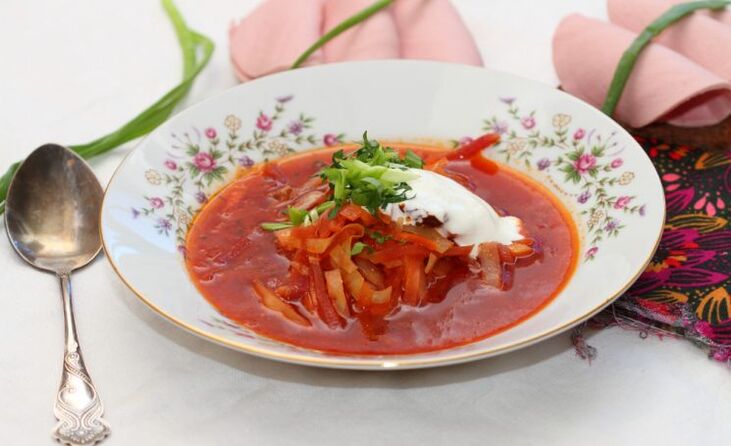
raw material:2. 5 liters of water, 1 onion, 2 carrots, 1 beetroot, 1 tomato, 1 celery root or stem, 2 potatoes, 200 g cabbage, salt, pepper (to taste), herbs (dill, parsley), low-fat sour cream or natural yogurt - serve.
Instructions.Put diced or grated vegetables in boiling water: onions, carrots, celery, beets, potatoes, cabbage, tomatoes (peeled). Cook until vegetables are ready. Salt, season. Then add chopped greens. Remove the pan from the heat and allow the borsch to brew. Serve with sour cream or yogurt (optional). In the finished borsch, a piece of lean boiled beef can be placed.
Omelette with poultry or meat
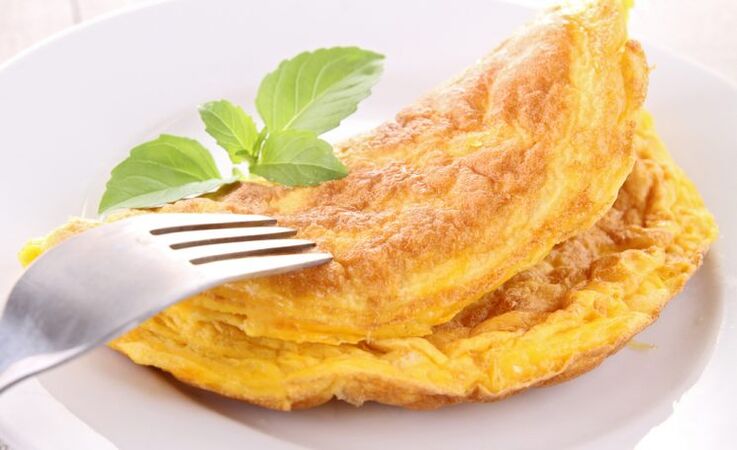
raw material:Turkey breast (chicken, guinea fowl) skinless or lean (beef, veal), 2 eggs, 2 tbsp. l. Low-fat milk, appropriate amount of salt.
Instructions.Whisk eggs with milk. Salt. Pour cooked or roasted poultry (meat) pieces over the sautéed pieces. Bake on both sides in the microwave, slow cooker or deep frying pan.
boiled cod
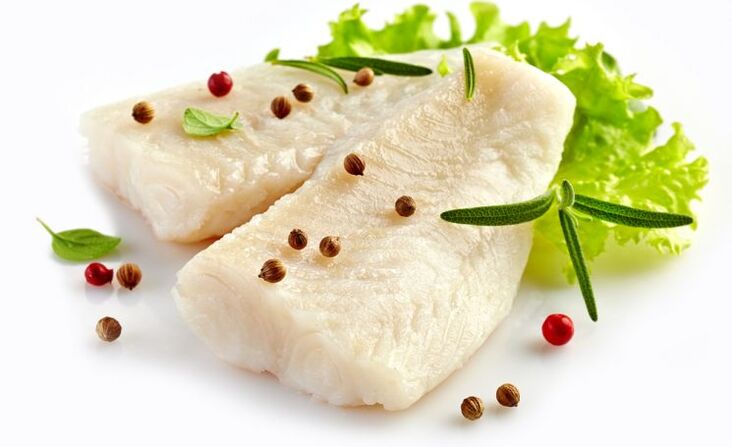
raw material:500 g cod fillets, 1 tsp. lemon juice, 1 onion, 1 bay leaf, 1 tbsp. l. Olive oil, parsley root (to taste), peppercorns (4-5 peas), herbs (dill, parsley) - 1 tbsp. l. , salt to taste.
Instructions.Rinse fillets in cold water, add lemon and cut into small pieces. Put the pieces into the broth boiled with the roots and spices so that the water covers the fish. Cover the cod and simmer for 12 minutes. Serve with vegetable stews.
Carrot Apple Squash Salad
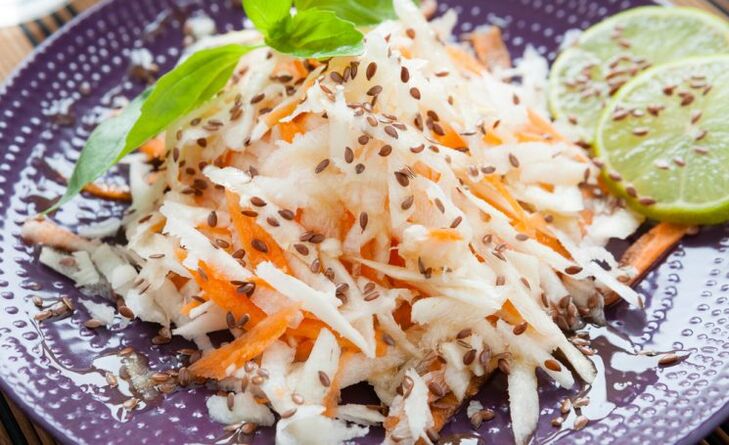
raw material:100g fresh pumpkin, 1 medium carrot, 1 green apple, 1 tsp. Lemon juice, 2-3 slices of orange or tangerine.
Instructions.Rub vegetables on a coarse grater and mix. Add lemon juice and garnish salad with orange slices.
Sea Bass Roll with Chinese Cabbage
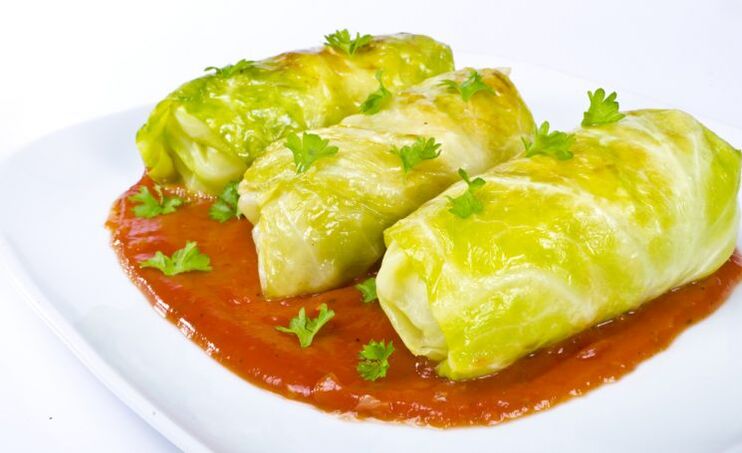
raw material:500g pike, 200g cottage cheese (5%), 4 egg whites, 1 green, salt and pepper to taste.
Instructions.Grind in a blender or run the zander fillets through a meat grinder twice. Then mix with the curd. Whip whites, add meatballs, mix, salt, pepper. Divide the ground meat into 4 portions, place each on a separate sheet of foil, and coat with olive oil. Roll into a roll, tightening the edges. Cook in a double boiler for 10-14 minutes. Wash the cabbage, split it into leaves, salt, pepper, and cook in a double boiler for 10 minutes. Arrange the cabbage leaves on a plate and use foil to lay the barracuda rolls on top.
stew
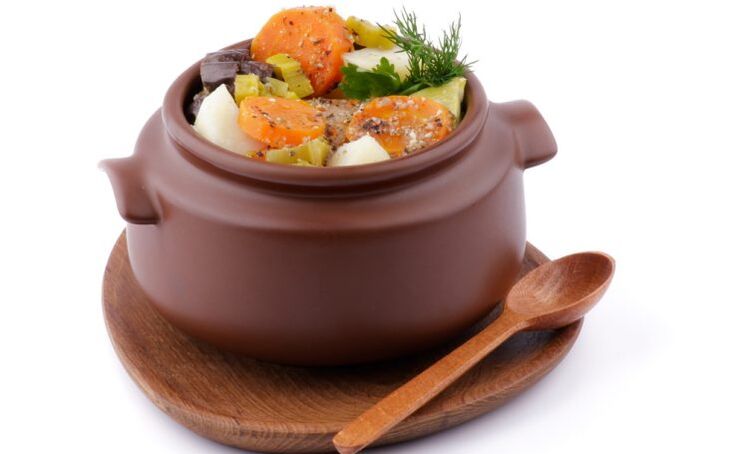
raw material:1 onion, 1 carrot, 1 tomato, 200g cabbage, 1 potato, 1 bell pepper, 100g baby corn, 1 tbsp. l. Vegetable oil, herbs (dill, parsley, celery), salt, pepper to taste.
Instructions.Place chopped onions, grated carrots, peeled and chopped tomatoes in a skillet heated with oil. Lightweight. Then add cubed cabbage and potatoes, and corn. Stir, add a little water, cover and cook until cooked through. Five minutes before you're ready, add the peppers and chopped vegetables.
vegetable casserole
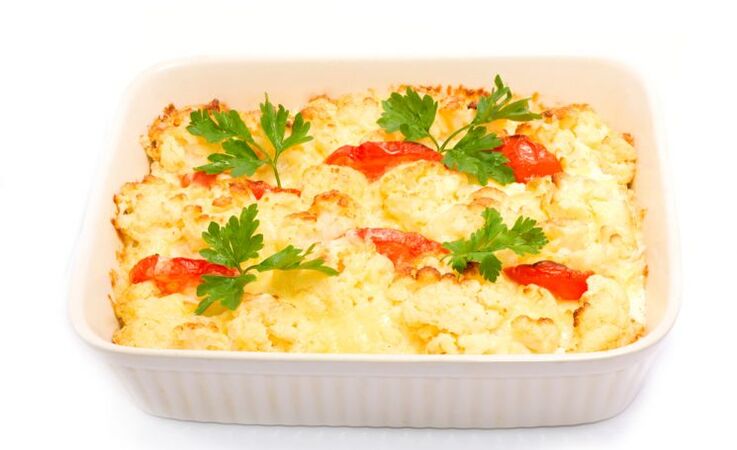
raw material:1 onion, 1 carrot, 300g cauliflower, 1 potato, 1-2 eggs, herbs (dill, parsley, celery), salt and pepper to taste.
Instructions.In a deep roasting pan coated with olive oil, place the vegetable mixture: chopped onion and carrots, cabbage, and cubed potatoes. Stir, add chopped vegetables, pepper, salt, beaten eggs. Put in an oven preheated to 200 degrees. Bake for 20-25 minutes.
Zucchini Rolls with Cottage Cheese
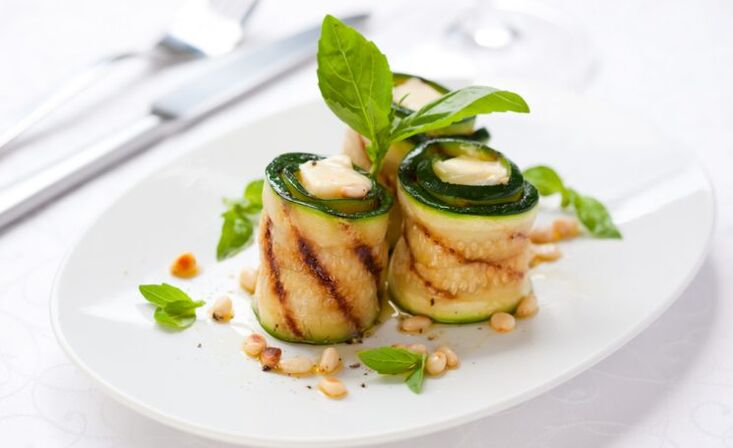
raw material:2 medium zucchini, 1/2 red bell pepper (seeded), 1 cucumber, 100 g low-fat cottage cheese, 1 bunch arugula, 1 tbsp. l. Olive oil, 1 dl. Chopped fresh herbs, salt to taste.
Instructions.Wash the zucchini, cut into thin longitudinal strips, lightly fry both sides with olive oil for 2 minutes (you can bake in the oven). Combine cheese with herbs and salt to taste. Cut peppers and cucumbers into thin lengthwise strips. Put some cottage cheese on the ends of the zucchini strips. Add a few strips of red pepper, cucumber, and arugula leaves, roll up, and place upright on a plate.
Apple Curd Casserole
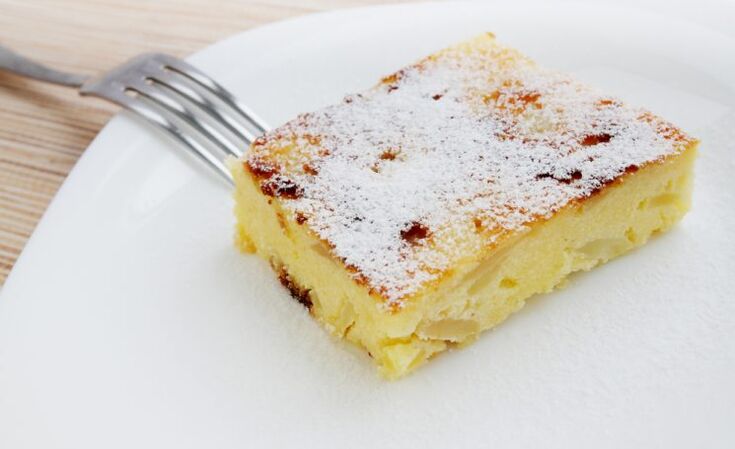
raw material:400 g nonfat cheese, 2 eggs, 1 tsp. starch, 1/4 tsp. salt, 1 tbsp. l. Sugar, 2 Antonovka apples.
Instructions.Beat eggs with salt and sugar, add cottage cheese and starch. The apples are peeled, cored, diced and added to the mass. Mix everything. Microwave for 12 minutes or oven until cooked through. Serve with yogurt, honey or jam.
Curd Dessert Berry
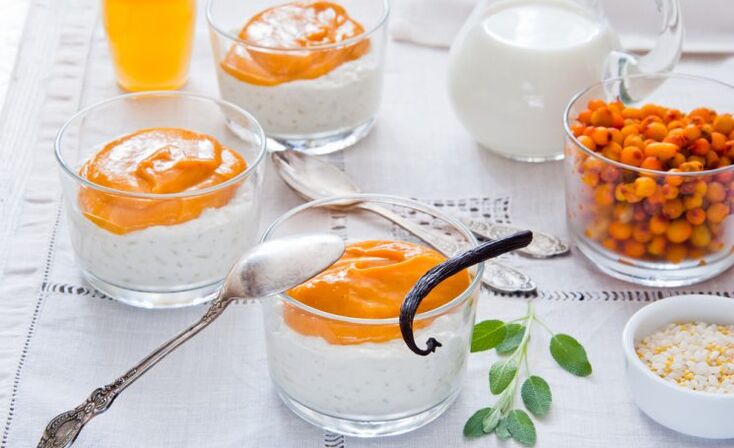
raw material:400g low-fat cottage cheese, 100g fresh berries, 2 egg whites, 1 tbsp. l. Sugar, 12 g gelatin, 1/4 sachet vanillin.
Instructions.Soak gelatin in 5-7 tablespoons of cold water. Whisk the egg whites. Add vanillin, sugar, and whipped protein to the cheese. Melt the gelatin over low heat until dissolved, then add to the curd, stirring. Place in refrigerator for 5 hours. Garnish with berries and serve.
































